5 Must Haves For Natural Cleaning

The idea of using natural cleaning products or products with more natural ingredients in place of their readily available, toxic counterparts has seen a massive rise in popularity in the past 5-10 years. A large part of this drive is the realization over time what these chemical cleaners are not only doing to our health but the environment.
Individually many of these ingredients can cause serious mucus membrane irritation, respiratory distress, and other seriously concerning health effects. Many readily available multi-purpose cleaners are a Laundry list of these chemicals mixed together, amplifying their toxicity. So we look to natural cleaning alternatives to preserve the health and safety of ourselves, our families, and the environment.

How natural is natural?
The rise in demand for natural cleaning products has resulted in the practice of greenwashing. Originating in 1986, the term greenwashing is used to reference companies and their products that are designed, marketed, and labeled to appear more environmentally friendly than they actually are.
The rise in demand for natural cleaning products has resulted in the practice of greenwashing. Originating in 1986, the term greenwashing is used to reference companies and their products that are designed, marketed, and labeled to… Share on X While there are instances of greenwashing occurring unintentionally, a more troubling trend is companies utilizing false environmental claims as a marketing strategy to capture consumers. A common form of greenwashing is the use of nature imagery to convey the idea that the product comes from natural origins.
While there are instances of greenwashing occurring unintentionally, a more troubling trend is companies utilizing false environmental claims as a marketing strategy to capture consumers. A common form of greenwashing is the use of nature imagery to convey the idea that the product comes from natural origins.
Another common instance is when products claim to be made from “recycled” or “post-consumer” materials; however, these products are made by workers in exploitive conditions in factories that are not environmentally friendly. Almond milk, for instance, exploded on the market as a more ethical and environmentally friendly milk alternative to traditional dairy. We now know that although no livestock is required to make almond milk, the amount of power, pesticides, and water needed to create almond milk is not responsibly sustainable.
It takes 15 gallons of water to make 16 almonds. This is an issue because many of the crops used are grown in California, a state already suffering from significant drought issues and soil erosion due to lack of natural groundwater. On top of water usage, almond crops require multiple pesticides, many of which kill the already endangered honey bee population.
It takes 15 gallons of water to make 16 almonds. This is an issue because many of the crops used are grown in California, a state already suffering from significant drought issues and soil erosion due to lack of natural groundwater. Share on X Ways To Be More Environmentally Friendly
Ways To Be More Environmentally Friendly
The perfect opportunity to make a lower environmental impact is to clean up your cleaning supplies. There is a laundry list of toxic ingredients often found in cleaning products, some of which are known carcinogens. Here are some readily available options to keep your home clean:
Vinegar
USE IT FOR – window cleaner, keeping laundry fresh, removing hard water build-up, removing mold, washing floors, home-made multi-purpose cleaner
Create your own multipurpose cleaner using a 1:1 ratio of cleaning vinegar to the water. This mixture can be used on almost any surface in your house to keep harmful microbes in check. It’s important to remember that vinegar is extremely acidic and should not be used on hardwood, granite, natural stone, and used in irons.
While vinegar is completely environmentally friendly, non-toxic, and biodegradable, it’s important to know that many mass-produced kinds of vinegar are processed in very non environmentally friendly ways using petrochemicals. Be sure you’re purchasing all-natural vinegar with no chemical additives.
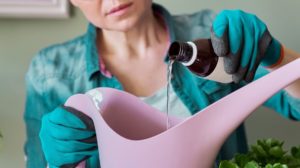 Hydrogen Peroxide
Hydrogen Peroxide
USE IT FOR – killing mold, removing stains, disinfecting, plant care
Using readily available 3% hydrogen peroxide is one of the best, most effective ways to successfully kill mold. When hydrogen peroxide breaks down you are left with only water and oxygen, no additional chemicals to potentially harm yourself or the environment.
When using hydrogen peroxide it’s important to allow for about 5-10 minutes of active oxygenation to ensure an adequate amount of time to disinfect the area.
If you are purchasing oxygen bleach, typically created using hydrogen peroxide and sodium carbonate, ensure that what you are purchasing is chlorine-free. Chlorine causes significant irritation to mucous membranes and when washed into waterways it can pose a toxicity threat to organisms in the water and soil.
Tea Tree Essential Oil
USE IT FOR – laundry deodorizer, pest control on houseplants, multipurpose cleaner, antifungal cleaner
Tea tree oil is a distilled oil from the leaves of the melaleuca plant. It has long been admired for its anti-inflammatory, antiviral and antifungal properties. It poses little to no risk of dermatitis when applied directly to the skin which makes it a great option to add to your own multipurpose cleaner. Dilute a teaspoon of tea tree oil with one cup of water in a spray bottle to make a ready-to-use antiviral spray for surfaces.
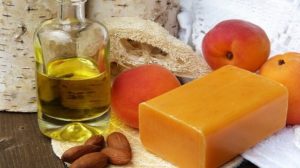 Castile Soap
Castile Soap
USE IT FOR – laundry soap, dish soap, hand soap, multipurpose cleaner
Castile soap is a blend of oil and either sodium hydroxide or potassium hydroxide. All of these ingredients are biodegradable. When selecting a castile soap ensure that there are no palm oils used. The palm oil industry is responsible for a significant amount of habitat loss for orangutans and other endangered animal species.
Using castile soap is extremely easy in many instances. Washing floors or your car? Add a couple of tablespoons to a full bucket of water. To make an all-purpose cleaner mix ¼ cups of castile soap with 6 cups of water.
Homebiotic
USE IT FOR – chemical free cleaning, maintaining microbial balance, preventing grime build-up and musty odors.
Homebiotic Probiotic spray is the perfect way to end any natural cleaning routine. Replenishing the probiotic population in your home and on your surfaces helps protect against an overgrowth of harmful microbes. Microbial balance is extremely important in any biome. Without beneficial bacteria, harmful microbes thrive causing issues such as toxic exposure and musty odors. Prevent them before they become an issue by using Homebiotic.
You will likely find a lot of cleaning products in your cabinets that you don’t use or chemical heavy products that you’re not wanting to continue using. There are only a few products that you really need to clean your entire home which makes living sustainably simple. Keeping a citric acid based multipurpose cleaner will cover all your cleaning needs across many different rooms and situations.
The Homebiotic Surface Cleaner, which is citric acid based, allows you to clean surfaces naturally without harsh chemicals that damage your home biome. Keeping a natural, safe balance of microbes in the home helps protect against exposure to toxins that could negatively impact your health. As an eco-bonus, Homebiotic Surface Cleaner arrives at your house as concentrated tabs that you mix using a reusable bottle, which saves plastic from ending up in landfills.
Resources
https://davidsuzuki.org/queen-of-green/non-toxic-disinfecting/
https://www.uofmhealth.org/health-library/tn2873spec
https://medium.com/disruptive-design/what-is-greenwashing-how-to-spot-it-and-stop-it-c44f3d130d5

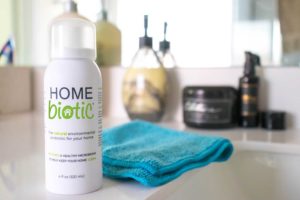
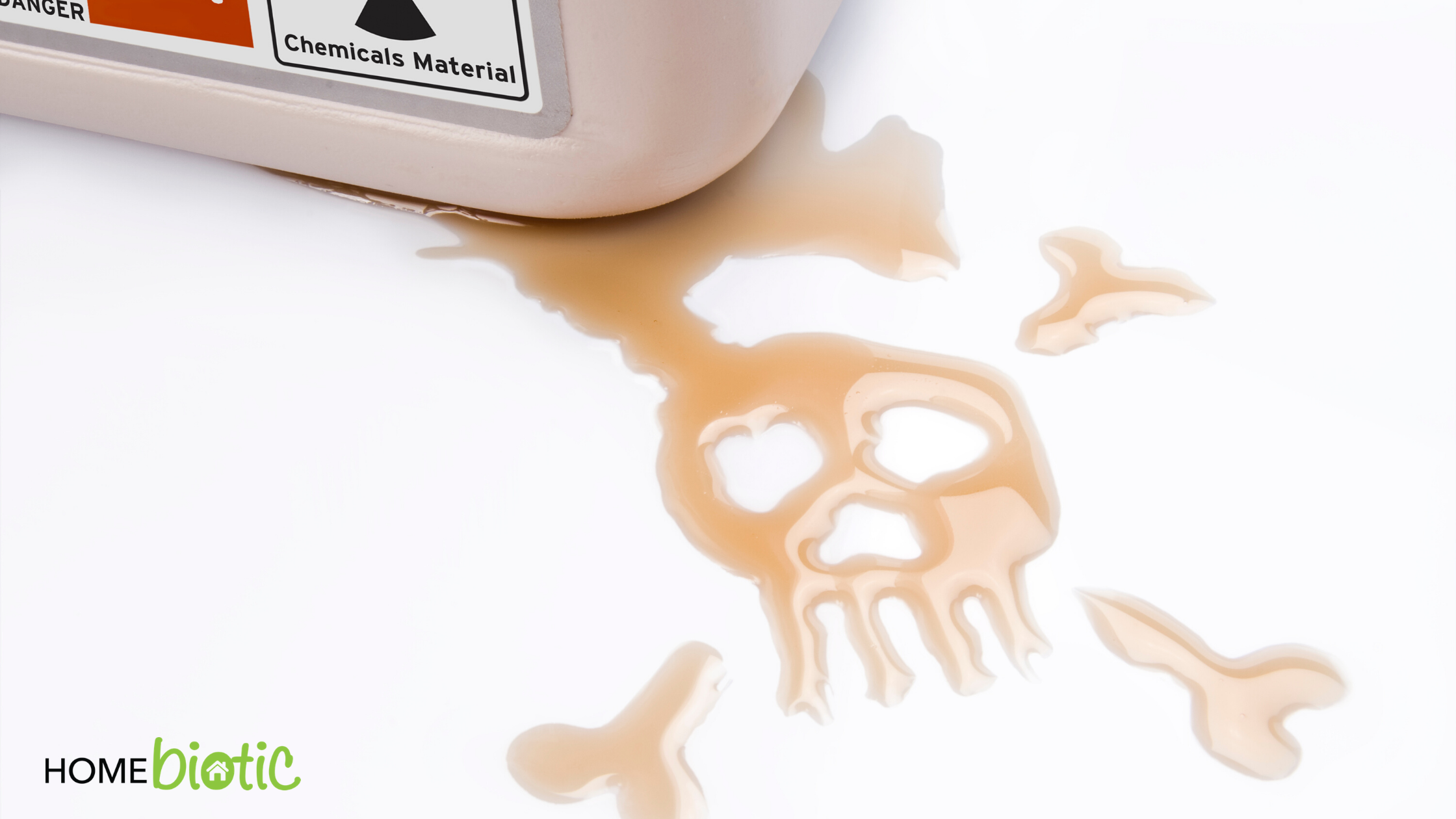
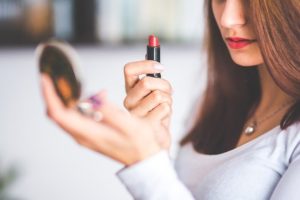 Phthalates
Phthalates Chlorine
Chlorine Percholoethelyne
Percholoethelyne Ammonia
Ammonia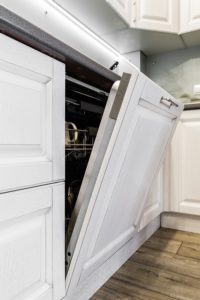 Triclosan
Triclosan